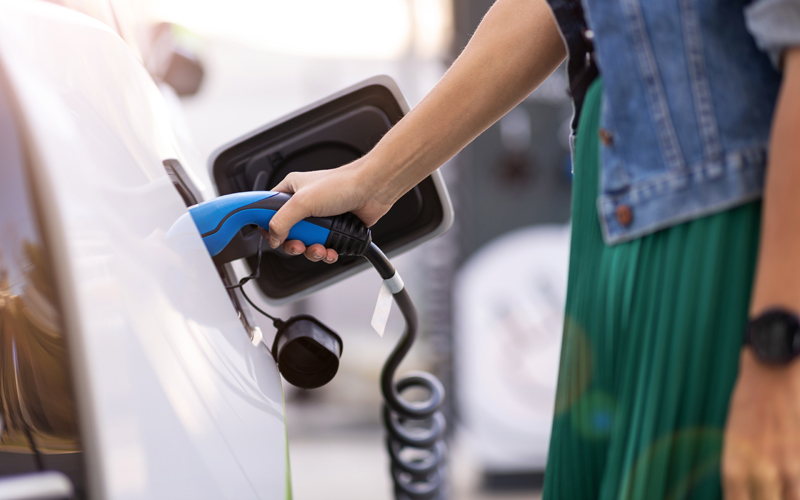Many Australians are interested in buying an electric vehicle for environmental reasons, but most say they’re too expensive. But are they really?
Research by Nielsen in 2019 found that price stopped 80 per cent of Australians from considering buying an electric vehicle (EV). Purchase price is an obvious barrier – EVs are more expensive than petrol or diesel vehicles.
In fact, the cheapest EV on the market is around $44,000, compared with the same brand’s entry-level petrol-powered car at around $17,000 – that’s two-and-a-half times more expensive.
Yet, fans of electric vehicles argue that they are cheaper in the long run due to lower fuel, servicing and maintenance costs.
The question is: are the cheaper running costs enough to pay back the higher purchase price?
Let’s take a look.
What do we need to consider in terms of EV running costs?
There are three things to consider.
1. Cost of fuel
A traditional car with an internal combustion engine (ICE) relies on petrol or diesel to power it. An EV is powered by electricity and can be charged via the electricity power grid or an alternative energy capture like solar.
Current prices for petrol are high – thanks to the Russia-Ukraine conflict and the Government’s cut to the fuel excise. Even with the government tax removed, petrol is currently around $1.80 per litre, while the typical cost for electricity for an EV is $0.33 per litre.
2. Cost of maintenance
Second, is the cost of maintenance. EVs have fewer moving parts and so have less need for regular servicing or replacement parts. Of course, EV owners will still need to spend money on things like tyre changes and repairs for any structural damage.
The Electric Vehicle Council of Australia estimates the maintenance costs of an ICE vehicle to be $7 per 100 kilometres and for an EV $2 per 100 kilometres. Based on a passenger vehicle’s average kilometres driven, that’s a difference of $555 a year.
3. Battery replacement costs
Finally, there is the potential need to replace the battery in an EV.
However, batteries have a long life (between 10 and 20 years) and it is usually covered by an extended warranty – so if it did need to be replaced, there’s a good chance that you won’t need to pay.
Crunching the electric vehicle numbers
To see what these costs might look like in reality, we’ve created two scenarios: Jodi and Josh.
Both has a petrol car and are thinking about buying an EV – so, we’ve crunched the numbers to see if an EV may stack up financially.
Low-kilometre driver
Jodi drives 11,100 kilometres a year (the national average for passenger vehicles). Based on the fuel and maintenance costs above, Jodi’s car will cost her $2,995 a year to run. If she switched to an EV, her annual running costs would be around $830, including a road user charge (existing in some states and proposed in others). That means that her current car costs around $2,160 more each year to run than an EV – that’s 3.6 times the cost.
How long would it take Jodi to break-even if she bought a new EV? Where the EV is $27,000 more expensive, and we add back incentives of a $1,320 stamp duty exemption (NSW Government) plus a $3,000 government rebate, she would need to own the car for more than 10.5 years to be better off.
In a world where the average lifespan of a car is about 8 years, that is not a compelling financial outcome. For the average driver, all else being equal, the difference in the purchase price of a petrol car and an EV would need to drop by around 16 percent to achieve a payback period of 8 years.
High-kilometre driver
For Josh it’s a different story. He’s does a lot of driving with 22,200 kilometres a year – travelling double the distance Jodi does (twice the national average). Josh’s current annual running costs are $5,990. With an EV, his costs would drop to around $1,670 – a saving of $4,320 a year.
Josh only needs to own a new EV for 5.2 years to break-even. The switch to an electric vehicle makes better financial sense for motorists who drive a lot more than average.
Other considerations
The cost of fuel is a significant factor. A significant and sustained increase in the price of petrol and diesel would improve the numbers in favour of an EV.
The purchase price of EVs may drop as demand for EVs increases. Hopefully, there may also be enhanced government incentives for EVs.
The sale price of petrol- or diesel-powered cars could go any which way. This is almost impossible to predict as we don’t know key factors like future government bans (or levies) on the production or use of traditional vehicles or trends in consumer demand.
On one hand, there could be low demand for petrol vehicles where drivers have embraced EVs.
On the other enthusiasts of traditional vehicles could support a healthy demand for petrol and diesel cars – and sustain or even boost their price.




























Trending
Sorry. No data so far.